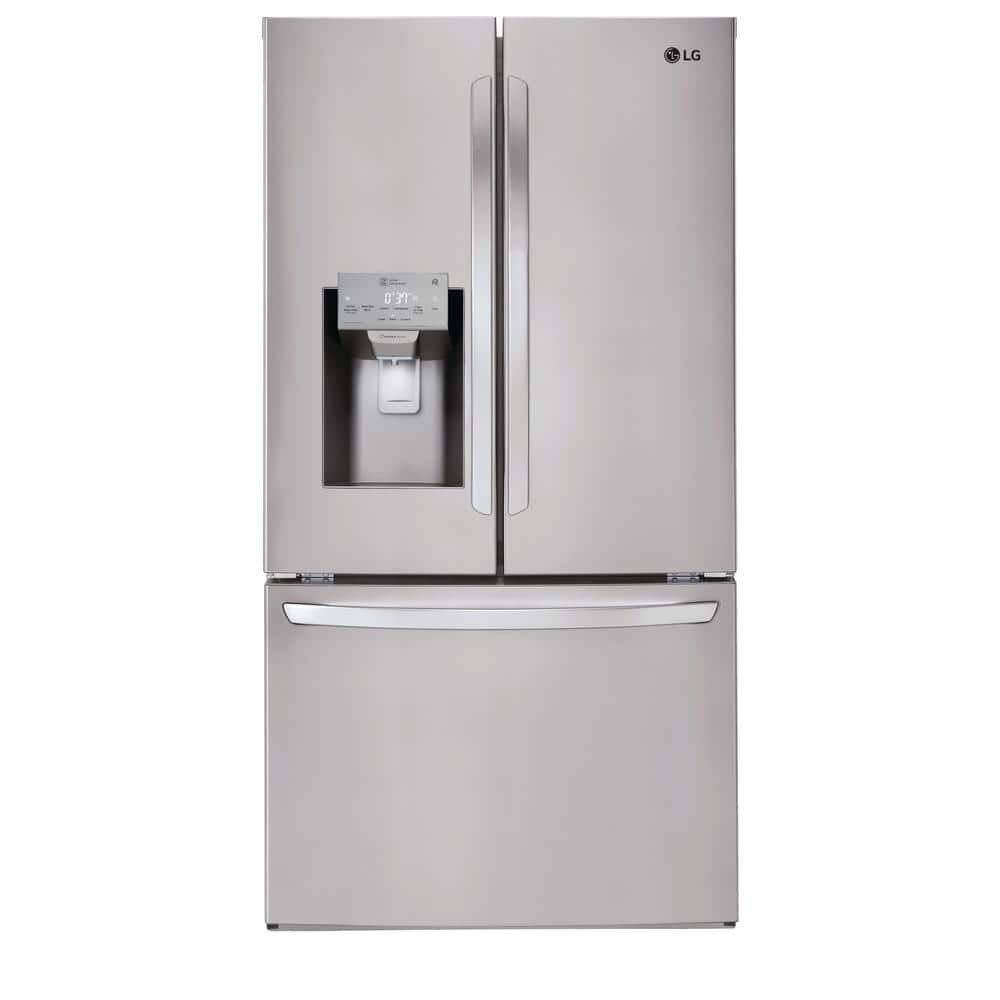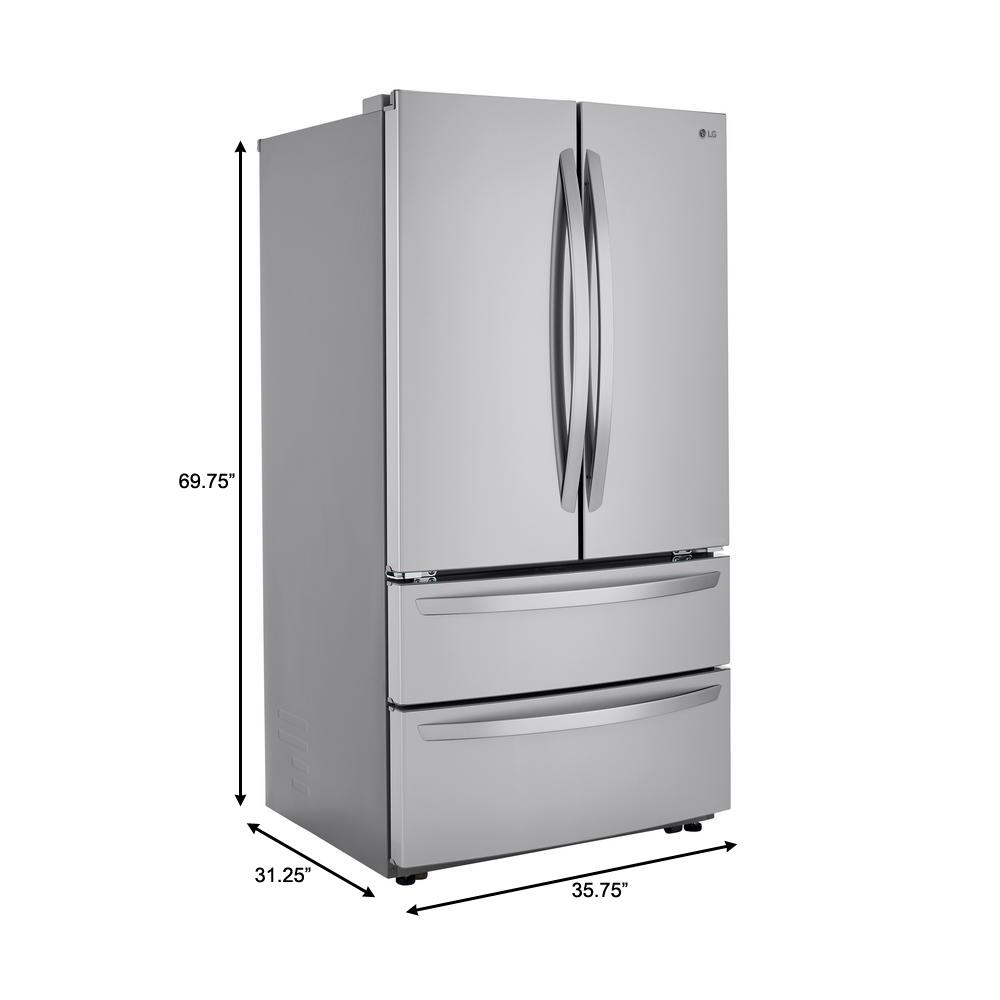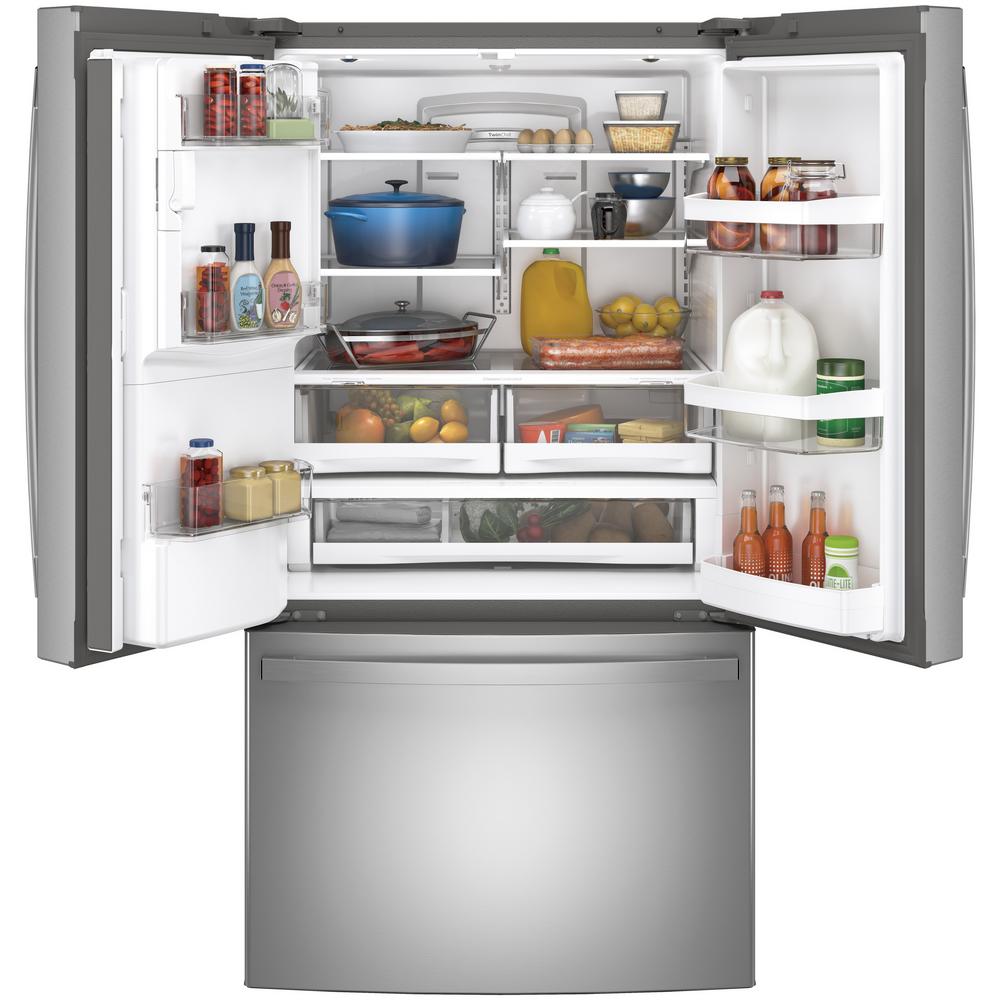LG 26.2 cu. ft. French Door Smart Refrigerator with Glide N’ Serve and Wi-Fi Enabled in PrintProof Stainless Steel
Store more food with an Ultra-Large Capacity refrigerator. Fingerprint resistant finish & Slim SpacePlus ice door system. Smart Home & Wi-Fi enabled to operate & troubleshoot on phone app.
Now you can keep your refrigerator organized instead of just wishing you could. With 26 cubic feet to work with, you get lots of great space and two ice makers to keep plenty of ice on hand for the family reunion. Plus, our Smart Cooling technology is designed to help keep all your food fresher, longer.
- Stock-up and store everything you need. With a cavernous 26 cubic feet of space, this LG French Door refrigerator gives you ample space for all of your familys favorite foods and keeps them conveniently organized and within reach.
- Dual ice makers, dispensed from the door and located in the freezer compartment, produce large amounts of ice so you never run out. This extra ice storage helps ensure that you have extra ice on hand for those hot summer days or when entertaining large parties
- From making extra ice for tonight’s dinner party while you’re at work to adjusting temperatures with simple voice commands, LG refrigerators with SmartThinQ technology will change the way you think and the way you live. Simply download the free LG SmartThinQ app to your Android or iOS device and let the possibilities unfold. Receive notifications on your smartphone when the door is open or your water filter needs to be replaced. Control refrigerator and freezer temperatures remotely. Diagnose issues and get quick, expert advice. Or, use the voice-activated features of Google Assistant or Amazon Alexa. LG makes it easy to keep your cool in any situation
- Ice makers are great, but not if it means you can’t fit all of your food in the fridge. The Slim SpacePlus Ice System provides the most shelf space and allows even more space for door bins.
- Smart Cooling system is designed to maintain superior conditions within the refrigerator. The Linear Compressor reacts quickly to temperature fluctuations and helps keep your food fresher, longer. Meanwhile, strategically-placed vents in every section help to surround your food with cool air no matter where you put it.
- One size fills all from pitchers to pint glasses, finally an ice and water dispenser that can accommodate just about any container. The water and ice-dispenser enhances the pro-style look of this refrigerator with the stainless steel backing, adding sophistication and premium quality
- 2-Tier Organization Freezer 2-Tier Organization Freezer
- SmartDiagnosis helps the service center diagnose problems over the phone, helping you troubleshoot quickly.
- Two humidity-controlled crisper drawers, a full-width Glide-N-Serve drawer, and a bonus drawer for fruits and vegetables make party preparations easy.
- This ENERGY STAR qualified LG refrigerator exceeds federal energy standards to positively impact your energy bill, your energy consumption, and most importantly, the environment.
- When you buy a refrigerator, you don’t want to worry that it won’t last. Because the Linear Compressor motor uses fewer moving parts and operates more efficiently, LG confidently backs the motor with a 10-year limited warranty.
- Use the voice-activated features of Google Assistant or Amazon Alexa. LG makes it easy to keep your cool in any situation. Let the advantages of smart technology work for you.
Additional information
| Depth (Excluding Handles) | 32.38 |
|---|---|
| Depth (Including Handles) | 34.88 |
| Depth (Less Door) | 28.5 |
| Depth With Door Open 90 Degrees (In) | 47.125 |
| Height to Top of Door Hinge (in.) | 69.75 |
| Height to Top of Refrigerator (in.) | 68.38 |
| Product Depth x Height x Width (in.) | 34.88 x 68.38 x 35.75 |
| Refrigerator Width (In.) | 35.75 |
| Certifications and Listings | CSA Listed,Energy Star |
| Manufacturer Warranty | 1 Year Parts & Labor, 5 Years Sealed System, 5 Years Compressor, 6-10 Years Linear Compressor Parts Only |






by Tammy
So far we love it. Still waiting on getting the water going to the ice maker. It is so quiet.
by Mary
Everything I expected!!!
by Pondo
Purchased in July 2021. We needed a new unit and after looking at many brands the LG had the features that we liked all in one unit. The door ice maker that leaves room for more storage and has a ice unit in the bottom freezer that is a major plus for us. The unit does not look large but is very spacious for our family. Only negative: is the icons on the ice/water selections. It is dark color like the unit and have to turn on the kitchen light to make a selection; minor issue. Over all a very good investment.